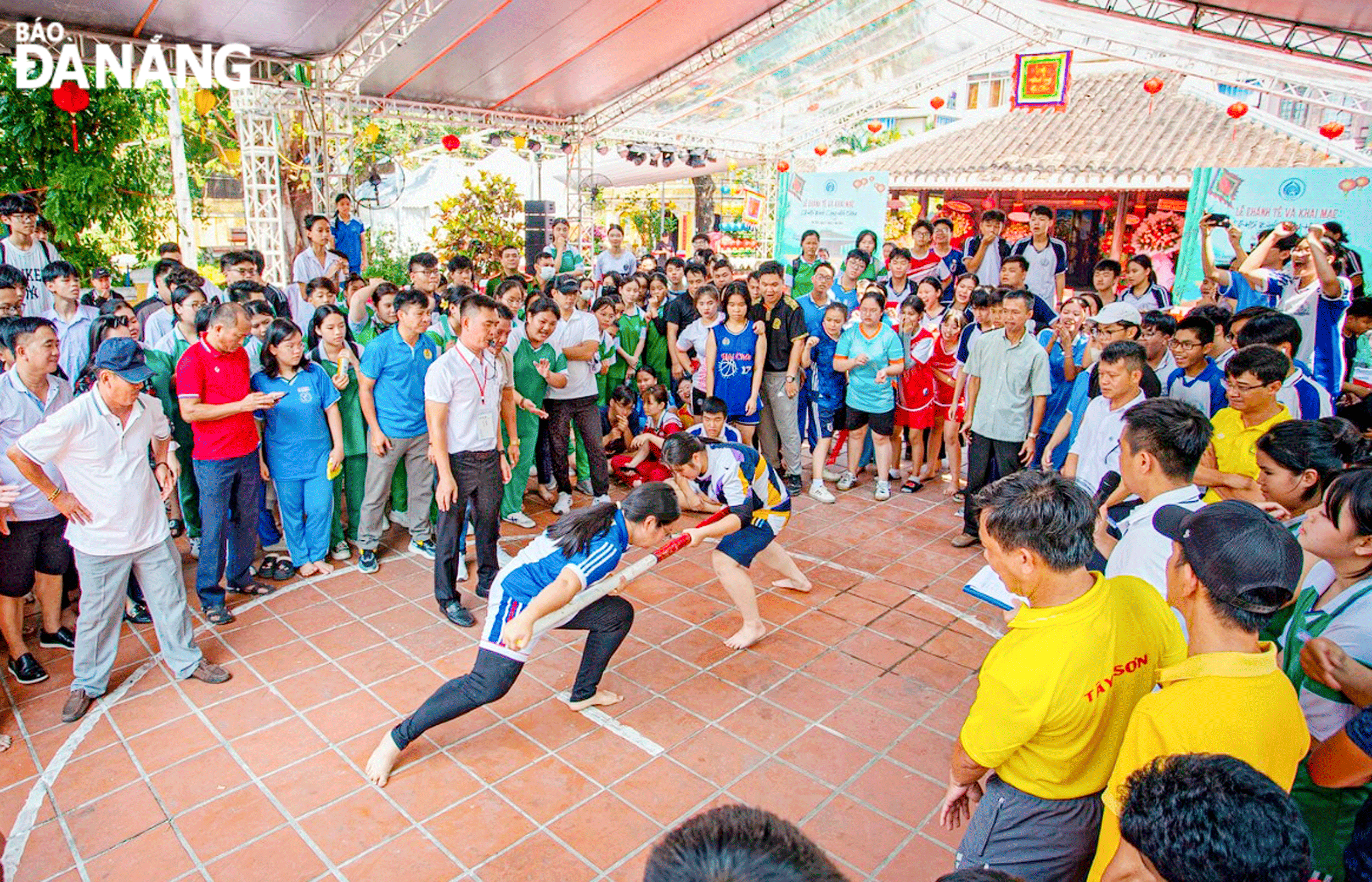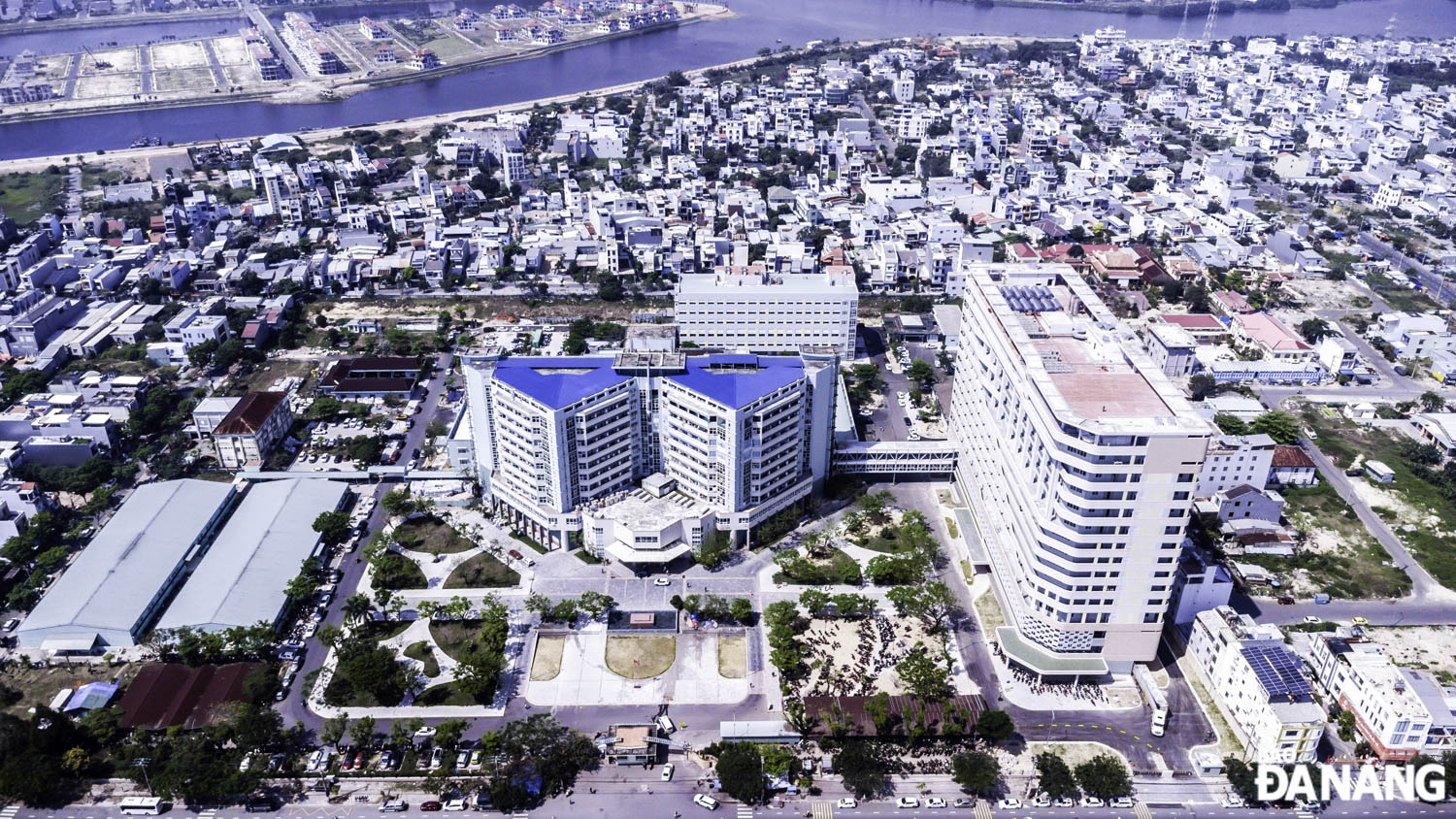Meticulous restoration and preservation of Hai Chau Village Communal House
After more than 22 years of restoration, several elements of the Hai Chau Village Communal House, a nationally recognised historical site, have suffered serious deterioration and damage. Cultural authorities and relevant agencies in Da Nang are now exploring options to restore the ancient communal house to its original state, but still retain its aesthetic value and align with public expectations.
 |
| The Hai Chau Village Communal House Festival is a significant cultural and religious event closely linked to the village temple. Photo: X.D |
Restoring ancient communal house
The Hai Chau Village Communal House was first constructed during the 3rd year of the Gia Long era (1804) to honour and express gratitude to the pioneers who established the village. The third reconstruction in 1904 saw the addition of ancestral worship halls for 43 clans, a temple for the village founders, a shrine for the goddess, a three-entrance gate, and a lotus pond within the communal house compound.
This communal house is considered the oldest in Da Nang, embodying the characteristic architecture of the Nguyen dynasty and reflecting the development of Hai Chau Village over the years.
In 2001, the Hai Chau Village Communal House was recognised as a national cultural and historical site, and from 2002 to 2005, it underwent major restoration. However, it has since deteriorated, with many parts in need of repair.
Nguyen Duy Phuc, a resident of Hai Chau 1 Ward, Hai Chau District, shared, "For long-time residents here, the Hai Chau Village Communal House is the most significant cultural institution, preserving the traditions and identity of our village. Over the years, urbanisation has caused the communal house to be increasingly overshadowed by surrounding buildings. Additionally, after extensive use, many sections are now damaged. We hope the communal house will be restored to a durable and beautiful state, with expanded space so that during festivals, residents can gather to conduct ancestor worship rituals".
Although the communal house no longer retains its original architectural design, it still preserves many distinctive features typical of the Quang Nam - Da Nang region.
The Central Construction Technology Institute, the consultancy unit for the restoration of the Hai Chau Village Communal House, reported that through surveys and historical documentation, many parts of the communal house were found to be damaged, degraded, and aesthetically unpleasing.
For example, the main roof tiles are damaged and leaking onto the wooden structure; some column bases have been infested with woodworms, weakening their load-bearing capacity; many decorative elements have broken off; and old memorial tablets have not been properly preserved. Some archival photos from the French colonial period provide a clearer picture of the original scale and design of the communal house, serving as a basis for restoring it to its former glory.
The restoration project is slated to renovate and restore 13 sections of the communal house with a budget of nearly VND 15 billion. Key tasks include dismantling and restoring yin-yang roof tiles and ridges, refurbishing the main worship hall's decorations, adjusting the memorial tablet bases along the corridors, and restoring the bell tower and the main entrance.
 |
| The annual Hai Chau Village Communal House Festival draws crowds with a wide range of fascinating cultural and sports activities. Photo: X.D |
Satisfying public expectations
The restoration and preservation of Hai Chau Village Communal House is essential to meet the needs and desires of the local community while preserving the village's unique cultural and architectural heritage.
According to Mr Huynh Dinh Quoc Thien, Director of the Da Nang Museum, the restoration of the Hai Chau Village Communal House should focus on preserving the original remaining elements of the site. Temporary, unsightly, and incongruous structures will be removed. Additionally, modern infrastructure such as electrical systems, water supply, and fire prevention will be installed, all while maintaining technical and aesthetic standards. The garden and landscape will also be renovated to match the historical period of the site.
"The Hai Chau Village Communal House, once restored, will showcase the different historical periods and the artistic and architectural values passed down by our ancestors during the village's formation and land protection. The successful execution of this project, in line with public expectations, will enhance community awareness about heritage preservation, with locals playing a crucial role in the site's long-term protection and development," Thien said.
Ms Cao Thi Huyen Tran, Secretary of Hai Chau District Party Committee, emphasised that the restoration of the Hai Chau Village Communal House must be carried out with the utmost care, considering various perspectives. From a planning standpoint, the area around the communal house is expected to be expanded according to the city's sub-zone planning, including the relocation of the Hai Chau 1 Ward People's Committee headquarters. Therefore, the restoration must align with the city's overall development plans, ensuring consistent and integrated cultural landscapes.
Furthermore, a comprehensive social consultation, involving both experts and the general public, is necessary to avoid any controversies once the restoration is complete. The restoration works must be meticulously researched to ensure they harmonise with the site's landscape, architecture, and artistic heritage, accurately reflecting the historical period.
"Hai Chau District will continue to collaborate with cultural authorities to refine and complete the restoration plan, ensuring the project meets the cultural needs of residents, educates the younger generation, and supports tourism" Ms. Tran added.
Reporting by K.NGUYEN - Translating by TRUC VY








